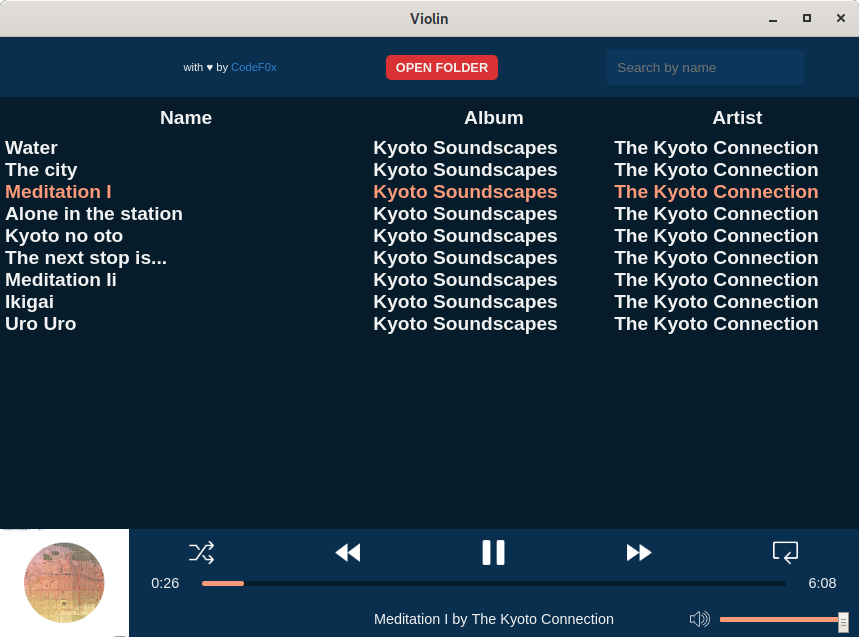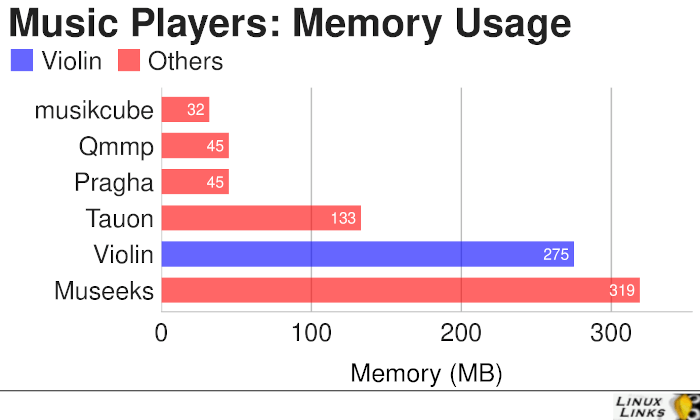Last Updated on April 9, 2022
In Operation
Here’s an image of Violin in action.

At the top of the screen is an Open Folder button, and a search box, the latter doesn’t work reliably. There’s the usual playback buttons at the bottom, shuffle, repeat, a playback bar, and a volume slider. The software also shows an album cover image if available.
The music player supports common audio formats including the essential lossless FLAC format, as well as MP3, MP4, WAV, and OGG. And there’s support for media keys if they’re present on your keyboard. You can sort by song name, album name, and artist name.
When the author describes Violin as minimalist, that description is accurate. There’s very few features on offer. Even basic music players typically offer things like playlists. Not with Violin. Which in many ways is good news; too many software applications become massively bloated over time laden with features you’ll never use. Violin lets me listen to a music collection without having to go through lots of hoops, or spend any time configuring the software.
But whatever its merits, I always consider a music player **must** have gapless playback. However, Violin doesn’t offer this. That’s a showstopper in my book.
Violin is billed as a lightweight music player. I always have lingering doubts when any software built with Electron bills itself as lightweight. Let’s see how it compares to some other music players in the memory stakes.
ps_mem is a small utility that reliably reports how much memory is consumed by an application. It’s a very handy open source utility. It interrogates the kernel to obtain the memory information, outputting the information in a clean and uncluttered way.

As you can see from the chart above, ps_mem reports Violin has a fairly hefty memory footprint. Not surprising because software written in JavaScript using the Electron framework often gobble RAM. Sure, you’d expect musikcube’s memory footprint to be small, as it’s console based software. But all the other music players have GUIs. And Tauon Music Player is feature-laden to boot.
Unusually, I also tried Violin in Windows. Task manager reports the music player uses around 44MB of RAM.
Pages in this article:
Page 1 – Introduction / Installation
Page 2 – In Operation
Page 3 – Summary
